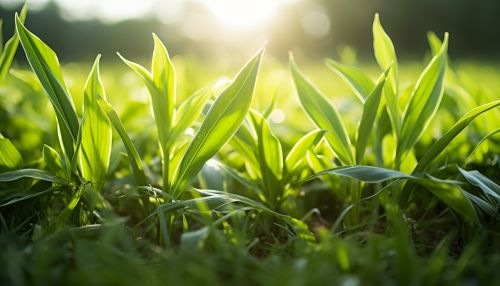The Role of Nanotechnology in Enhancing Crop Resistance
Introduction
Nanotechnology, the manipulation of matter on an atomic and molecular scale, has emerged as a powerful tool in various fields, including agriculture. This article focuses on the role of nanotechnology in enhancing crop resistance, a critical aspect of sustainable agriculture.
Nanotechnology and Agriculture
Agriculture, a sector that feeds the world's population, is facing numerous challenges, including climate change, pests, diseases, and the need to produce more food with less land and water. Nanotechnology offers potential solutions to these problems by enhancing crop resistance to various stresses.
Understanding Nanotechnology
Nanotechnology involves the manipulation of particles at the nanometer scale (one billionth of a meter). At this scale, materials exhibit unique properties that can be exploited for various applications. In agriculture, nanotechnology can be used to create nanomaterials that enhance crop resistance to pests, diseases, and environmental stresses.
Nanotechnology for Crop Resistance
Nanotechnology can enhance crop resistance in several ways. These include the delivery of pesticides and fertilizers, the enhancement of plant genetic resistance, and the improvement of soil health.
Delivery of Pesticides and Fertilizers
Nanotechnology can improve the delivery of pesticides and fertilizers to crops. Nanoparticles can be designed to release these substances slowly, reducing the amount needed and minimizing environmental impact. This can enhance crop resistance to pests and diseases and improve crop yield.
Enhancement of Plant Genetic Resistance
Nanotechnology can also be used to enhance plant genetic resistance. Nanocarriers can deliver genes or RNA molecules that confer resistance to pests or diseases directly into plant cells. This can result in crops that are more resistant to these threats.
Improvement of Soil Health
Nanotechnology can improve soil health, which is crucial for crop resistance. Nanoparticles can be used to deliver nutrients directly to plant roots, improving plant health and resistance to stresses. Additionally, certain nanoparticles can improve soil structure and water retention, further enhancing crop resistance.
Challenges and Future Directions
While nanotechnology holds great promise for enhancing crop resistance, there are also challenges. These include the potential environmental and health impacts of nanoparticles, the need for further research, and the need for regulation and public acceptance.
Despite these challenges, the future of nanotechnology in agriculture looks promising. With further research and development, nanotechnology could play a crucial role in ensuring food security and sustainability in the face of increasing global challenges.
See Also


References
1. Ghormade, V., Deshpande, M. V., & Paknikar, K. M. (2011). Perspectives for nano-biotechnology enabled protection and nutrition of plants. Biotechnology advances, 29(6), 792-803. 2. Rai, M., Ingle, A., Birla, S., Yadav, A., & Santos, C. A. (2016). Strategic role of selected noble metal nanoparticles in medicine. Critical Reviews in Microbiology, 42(5), 696-719. 3. Singh, A., Singh, N. B., Hussain, I., Singh, H., & Singh, S. C. (2016). Plant-nanoparticle interaction: an approach to improve agricultural practices and plant productivity. International Journal of Pharmaceutical Sciences and Research, 7(9), 3723. 4. Khot, L. R., Sankaran, S., Maja, J. M., Ehsani, R., & Schuster, E. W. (2012). Applications of nanomaterials in agricultural production and crop protection: A review. Crop Protection, 35, 64-70.
